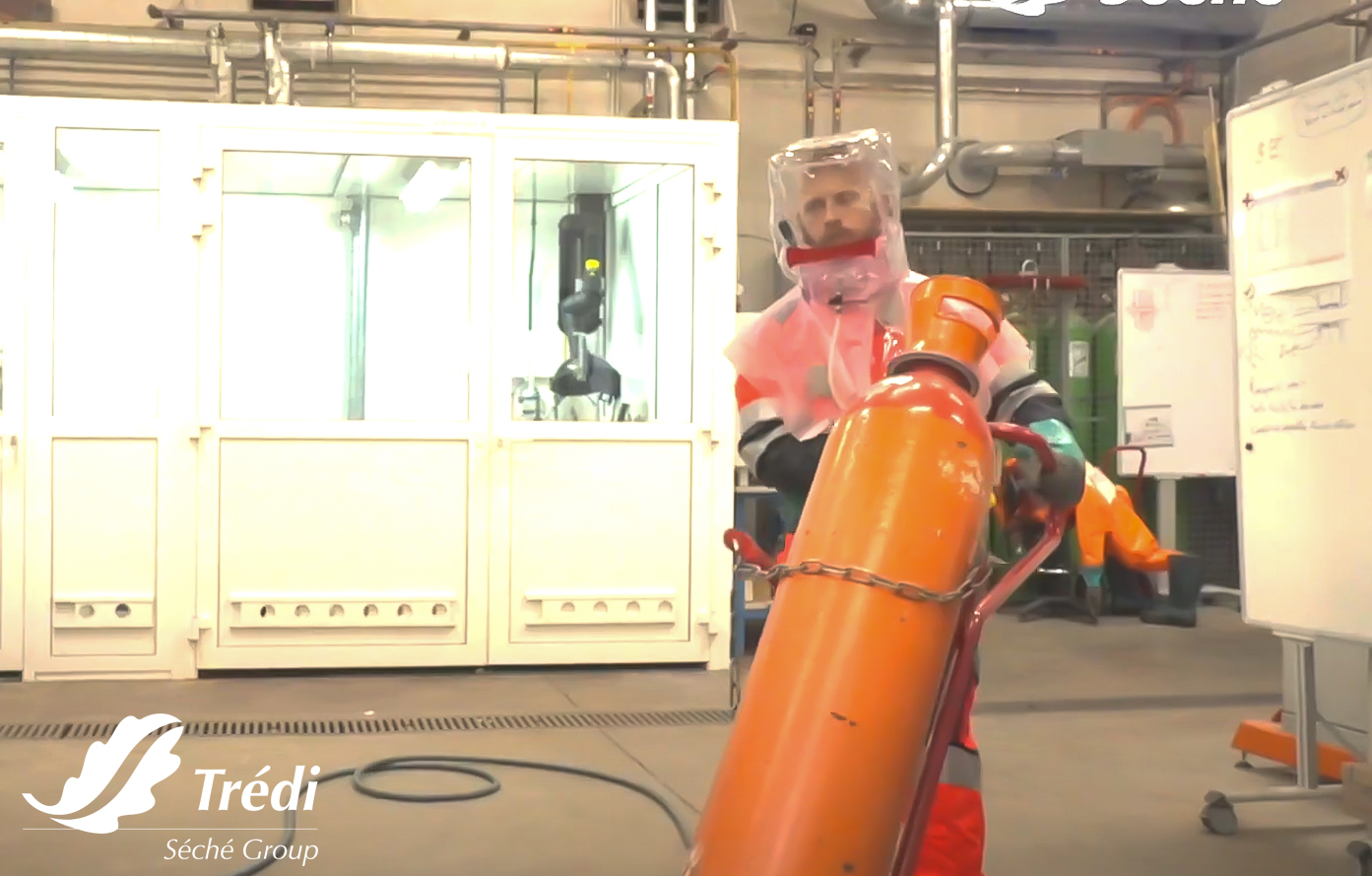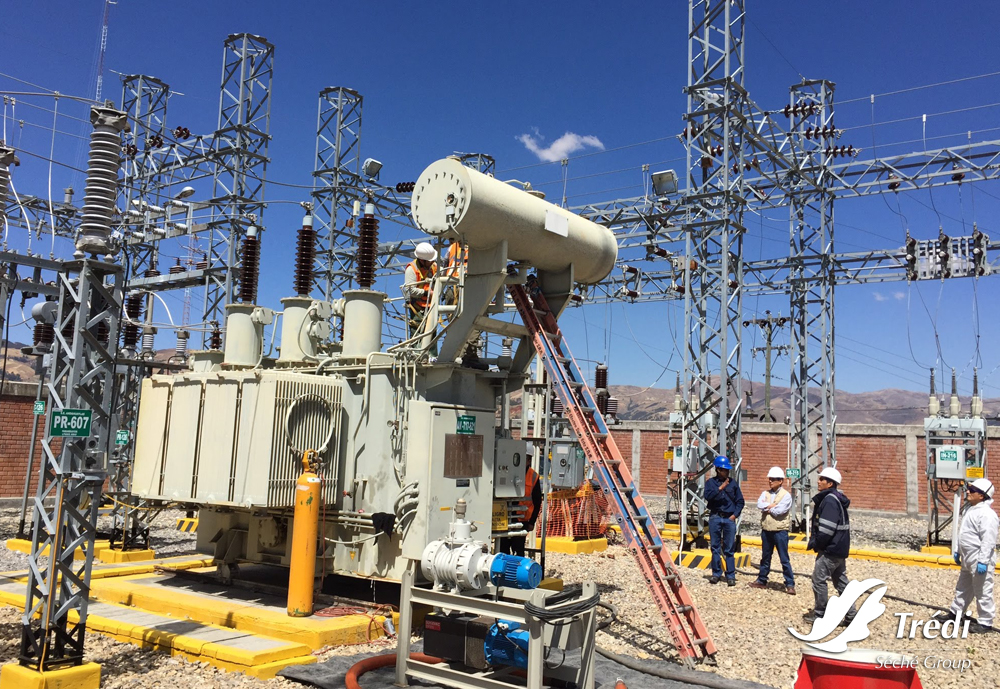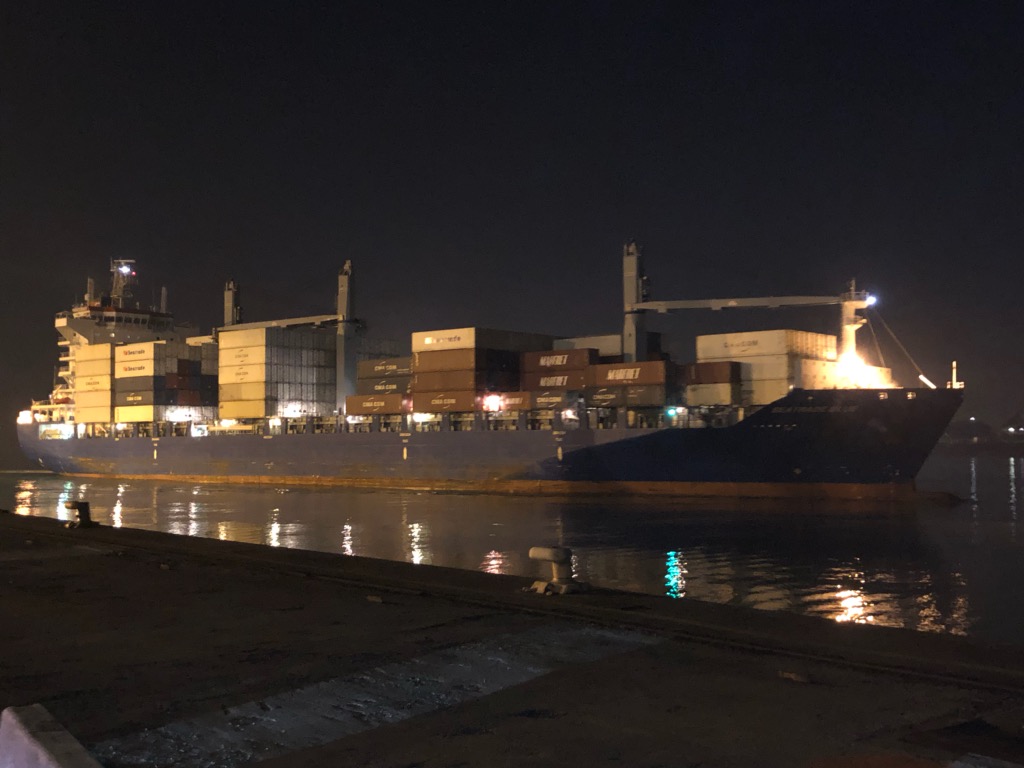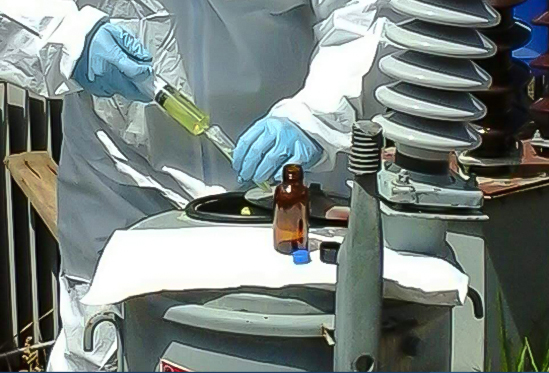
In Trédi Argentina, we put together the following glossary with key concepts about the Integral Management of Polychlorinated Biphenyls. An explanation of the different parts that are usually followed in the work we do together with our clients.
Oil that is stable at high temperatures and has excellent electrical insulation properties. It is used in oil-filled transformers, some types of high voltage capacitors, fluorescent lamp ballasts and some types of high voltage switches and circuit breakers. Its functions are to insulate, to suppress corona discharge and arcing, and to serve as a coolant
Any activity to ensure conditions to stockpiles and wastes that are, contain or are contaminated with PCBs and their safe handling according to their destination, for treatment or final disposal.
European Agreement concerning the International Carriage of Dangerous Goods by Road.
The incorporation and adhesion of a gas, liquid or dissolved substance to a thin layer of molecules on the surface of a solid.
Administrative unit in charge of the application of legislation relating to the import and export of goods, such as the control of traffic of goods entering or leaving a customs territory, carrying out their valuation, classification and verification, and of the application and control of a tariff and prohibition regime.
A member of the World Health Organization (WHO), it is an international organization dedicated to assessing the risk of developing cancer due to contact with chemicals.
Person of visible or ideal existence who, on behalf of the carriers, is in charge of the formalities related to the presentation of the means of transport and its cargoes before Customs.
Implies the holding of hazardous waste for a temporary period at the end of which it will be treated, disposed of or stored elsewhere.
Any equipment that contains or has contained PCBs (e.g., transformers, capacitors, containers containing residual amounts) and has not been decontaminated. Apparatus of a type that may contain PCBs shall be considered to contain PCBs unless it can be demonstrated otherwise.
Non-flammable synthetic electrical insulating liquids of the chlorinated aromatic hydrocarbon type that were used as an insulating and cooling medium in electrical equipment (See PCBs).
Means the governmental authority designated by a Party to receive, in such geographical area as the Party deems appropriate, notification, of a transboundary movement of hazardous wastes or other wastes, as well as any information thereon, and to respond to such notification.
Aromatic compounds with toxic characteristics, do not readily biodegrade, are persistent in the environment, accumulate in the fatty tissues of the body, are carcinogenic and cause serious effects in humans and animals; they are formed in such a way that the hydrogen atoms in the biphenyl molecule (2 benzene rings linked together by a single carbon-carbon bond) are replaced by up to 10 chlorine atoms.
A receipt given to the shipper for goods delivered. It proves the existence of a contract of carriage by sea and grants rights to the goods.
Net accumulation, over time, of metals (or other persistent substances) in an organism from both biotic (other organisms) and abiotic (soil, air and water) sources.
Tendency of some chemicals to accumulate along the trophic chain, exhibiting successively higher concentrations as one moves up the trophic level. The concentration of the product in the consuming organism is greater than the concentration of the same product in the consumed organism.
A set of food chains in an ecosystem, interconnected by feeding relationships. Plants, herbivores and carnivores are all part of the food web.
Said of a substance that causes or induces cancer.
A capacitor is an electrical device that allows energy to be stored in the form of an electric field.
Carrier
Rare acne-like skin disease caused by exposure to halogenated aromatic hydrocarbons (such as dioxins and PCBs).
In chemistry, any compound belonging to the same chemical family. Refers to one of a number of variants or configurations of the same chemical structure.
Person designated by the shipper of the Product to take charge of it and deliver it to the importer; the consignee and the importer may be the same natural or ideal person, if so determined by the shipper thereof.
Chemical substances that persist in the environment, bioaccumulate in the food chain and pose a risk of causing adverse effects to human health and the environment. This group of priority pollutants is composed of pesticides (such as DDT), industrial chemicals (such as polychlorinated biphenyls, PCBs), and unintentionally by-products of industrial processes (such as dioxins and furans). These are transported and carried far from the source, crossing international borders, even reaching regions where they have never been used or produced.
Refers to any container in which a material is stored, transported, or otherwise handled.
A global treaty that has 188 member countries (parties) to date and aims to protect the environment and human health against harmful effects arising from the generation, management, transboundary movements, and disposal of hazardous and other wastes.
Entered into force in 2004, it aims to protect human health and the environment from Persistent Organic Pollutants (POPs). The convention requires Parties to take measures to eliminate or reduce the production, use, import, export and release into the environment of POPs and includes provisions for access to information, public awareness and education, and participation in the development of implementation plans.
International convention dealing with the prevention of pollution of the marine environment from ships due to operational or accidental factors.
A technique used to analyze halogenated compounds and is mainly used in the environmental, forensic and pharmaceutical markets. When certain molecules pass through the detector, they capture some of the electrons in the sample, which reduces the measured current. The compensation for this reduction is recorded as a positive peak.
The ecosystem where hazardous wastes already treated as a result of disposal operations have or may have their final destination. Receiving bodies are surface freshwaters, the atmosphere, soils, stable and confined geological structures.
Chemical process of selective substitution of chlorine atoms by hydrogen in PCB molecules to reduce their concentration and toxic properties.
Set of operations that allow PCB-contaminated equipment, objects, materials or fluids to be reused, recycled or disposed of safely, and which may include substitution, this being understood as any operation to replace PCBs with suitable fluids that do not contain PCBs.
A group of organochlorine chemical compounds that have similar chemical structures Some have harmful properties, depending on the number and position of chlorine atoms. One of the most toxic dioxins is TCDD dioxin (2,3,7,8 tetrachlorodibenzo-p-dioxin). Certain PCBs with similar properties are considered “dioxin-like”.
Any hazardous waste disposal operation involving the incorporation of hazardous waste into receiving bodies, after treatment.
Economic system of exchange and production that, at all stages of the life cycle of products (goods and services), aims to increase the efficiency of resource use and reduce the impact on the environment, allowing the welfare of people. The circular economy is opposed to the classic model of linear economy (extract-produce-consume-throw away). It should make it possible to decouple resource consumption and growth while reducing environmental impacts. It is about doing better with less. In any case, the circular economy is not just about recycling. It offers a systemic vision of the flow of materials and energy, with the key to many levers of action. It involves taking into account the following three fields:
Substances or wastes that, if released, have or may have immediate or delayed adverse effects on the environment, due to bioaccumulation or toxic effects on biotic systems.
Set of operations, processes or techniques that may or may not lead to resource recovery, recycling, reclamation, direct reuse or other uses of stockpiles or wastes that are, contain or are contaminated with PCBs, to increase their potential for utilization and/or valorization and to reduce risks to human health and the environment.
Personal protective equipment to prevent harm to workers from exposure to PCBs.
Means any Party from which a transboundary movement of hazardous wastes or other wastes is planned to be initiated or is initiated.
Means any Party to which a transboundary movement of hazardous wastes or other wastes is planned to be made or is being made for the purpose of disposal therein or loading for disposal in an area not under the national jurisdiction of any State.
Means any State, other than the State of export or the State of import, through which a movement of hazardous wastes or other wastes is planned or takes place.
Means Parties that are States of export or States of import and transit States, whether or not they are Parties.
A numerical value or narrative statement that has been established as a limit on discharges and emissions of hazardous wastes to a receiving body at a given location, calculated on the basis of environmental quality objectives and the particular characteristics of the receiving body at that location.
When the PCB concentration is less than 0.0002 % (or 2 ppm) or 0.005 % (50 ppm) determined according to ASTM D-4059 or other equivalent internationally recognized standard.
International institution dedicated to investing in the joint management, care and recovery of the planet. Investments are channeled through the United Nations Development Programme (UNDP), the United Nations Environment Programme (UNEP), the World Bank, regional development banks and other UN agencies.
Indicates accidental situations in which a hazardous or non-hazardous substance or waste is likely to enter directly into the environment.
Means any person whose activity produces hazardous wastes or other wastes that is the subject of a transboundary movement or, if that person is unknown, the person who is in possession of and/or controls such wastes.
Technical, financial, administrative, educational and planning actions, related to the identification, handling, marketing, storage, transportation, follow-up and monitoring, including the use and end-of-life stages of PCB stockpiles and wastes in order to avoid their release, as well as to promote their environmentally sound management and disposal, framed in principles of prevention, precaution and risk minimization, among others, seeking technical and economic efficiency of the processes.
It is a thermal oxidation process at high temperature in which hazardous waste is converted, in the presence of oxygen, into non-combustible gases and solid residues. The gases generated are emitted into the atmosphere after gas cleaning and the solid residues are deposited in a safety landfill.
The process of recording stockpiles and residues that must contain, as a minimum, the data of the equipment and the waste. At least the data of the equipment, wastes and facilities that through the analysis processes have been determined to be, contain or contain PCBs. Analysis processes have determined to be, contain or are contaminated with PCBs.
Portion of the customs territory within which goods are subject to customs supervision and regulation. It includes not only the ports or other places where customs offices are located, but also the coastal or land surveillance radius to which this jurisdiction extends. The customs area or territory is generally confused with the political territory, being the customs jurisdiction the place or concrete enclosure where the formalities of tariff nature or other type are fulfilled.
Instrument that documents the nature and quantity of the waste generated, its origin, transfer from the generator to the transporter and from the transporter to the treatment plant, as well as the treatment processes to which it was subjected, and any other operation performed with respect to the waste.
The systematic control of the collection, separation at source, storage, transportation, processing, treatment, recovery and final disposal of hazardous waste.
Means the adoption of all practicable measures to ensure that hazardous wastes and other wastes are managed in a manner that protects the environment and human health against the harmful effects that may result from such wastes.
Are goods classified as dangerous goods for which there are regulations regarding their acceptance procedure, packaging, stowage, documentation and transportation whether for local or international shipment. There are nine (9) classifications of dangerous goods for international shipping and the regulations, documentation, acceptance procedures, packaging and stowage are established by the International Maritime Organization (IMO).
All dangerous goods are classified according to their chemical characteristics and degree of hazard. There are nine different classes:
Means any movement of hazardous wastes or other wastes from an area under the national jurisdiction of one State to or through an area under the national jurisdiction of another State, or to or through an area not under the national jurisdiction of any State, provided that the movement affects at least two States.
are four-digit numbers used to identify hazardous substances or materials (such as explosives, flammable liquids, toxic substances, etc.) in the context of international transport.
International body dedicated exclusively to maritime matters. The general objectives of the IMO are stated in the motto: Safe, secure and efficient shipping on clean seas.
The person responsible for the complete operation of a facility or plant for the treatment and/or final disposal of hazardous waste.
A list specifying the contents of each package in an export operation.
Are those in which waste disposal operations are carried out.
Those sites in which the physical characteristics, chemical composition or biological activity of any type of waste from industrial and service activities are modified in such a way as to eliminate or reduce their harmful, hazardous or toxic properties, or to recover energy and material resources, or a waste of lower risk levels is obtained, or it is made susceptible to recovery or valorization, or safer for its transportation or final disposal, under environmental hygiene and safety standards that do not put at risk or affect the quality of life of the population, in a significant way.
Plant built for the disposal of PCBs with or without recovery, which can be moved and operate in a space owned by the PCB holder.
The natural or legal person, public or private, who is in possession of PCBs, used PCBs or PCB-containing equipment.
Equivalence: 1 ppm = 0.0001%, 1 ppm = mg/kg.
The minimum temperature at which a flammable substance or preparation gives off sufficient vapor to form a flammable mixture with the air surrounding the surface of the substance.
For the purposes of the provisions of Art. 2° of Law No. 24,051 of Hazardous Waste of the Argentine Republic, hazardous waste is defined as any material that results in waste or abandonment and may harm directly or indirectly, living beings or contaminate soil, water, atmosphere or the environment in general; and any of those expressly indicated in Annex I of Law No. 24,051 or that possesses any of the characteristics listed in Annex II of the same Law.
Chemical system that does not exchange matter with the external environment.
When on surface less than 10 μg per dm2 of PCB is obtained as determined by swabbing according to EPA SW 846.
Those whose PCB concentration by weight is less than 50 ppm.
Substances or wastes that can cause death or serious injury or damage to human health, if ingested or inhaled or come in contact with the skin.
Transfer of cargo from one vehicle to another, whether or not it belongs to the same mode of transportation (railroad, road, waterway, pipeline, etc.).
Device that converts alternating electrical energy of a certain voltage level into alternating energy of another voltage level, based on the phenomenon of electromagnetic induction.
Carriage of goods by two or more different modes of transport (truck, wagon, ship, air), under a multimodal, multimodal or combined transport contract, from a place located in one country where the multimodal transport operator takes the goods, under its responsibility and custody, for subsequent delivery to another place located in a different country.
Means any person who executes the transport of hazardous wastes or other wastes.
Any physical, chemical, thermal or biological method, technique or process designed to change the composition of any hazardous waste or modify its physical, chemical or biological properties so as to render it non-hazardous, or less hazardous or make it safe for transportation, storage or disposal; recover energy, or materials or make it suitable for storage, and/or reduce its volume. Dilution is not considered treatment.
Space of sea or land in which the material, maritime and terrestrial operations of the mobilization of the merchandise are carried out, which for the effects of its jurisdiction is a customs area and in which the merchandise must be loaded, unloaded, received or inspected, for its introduction or exit of the national territory.
Means any area of land, sea or airspace in which a State exercises, in accordance with international law, administrative and regulatory powers in relation to the protection of human health or the environment.



